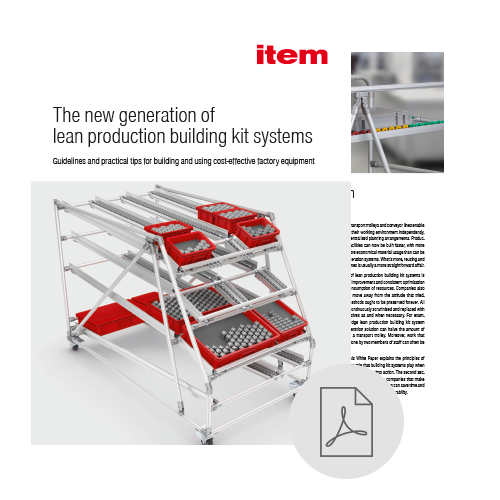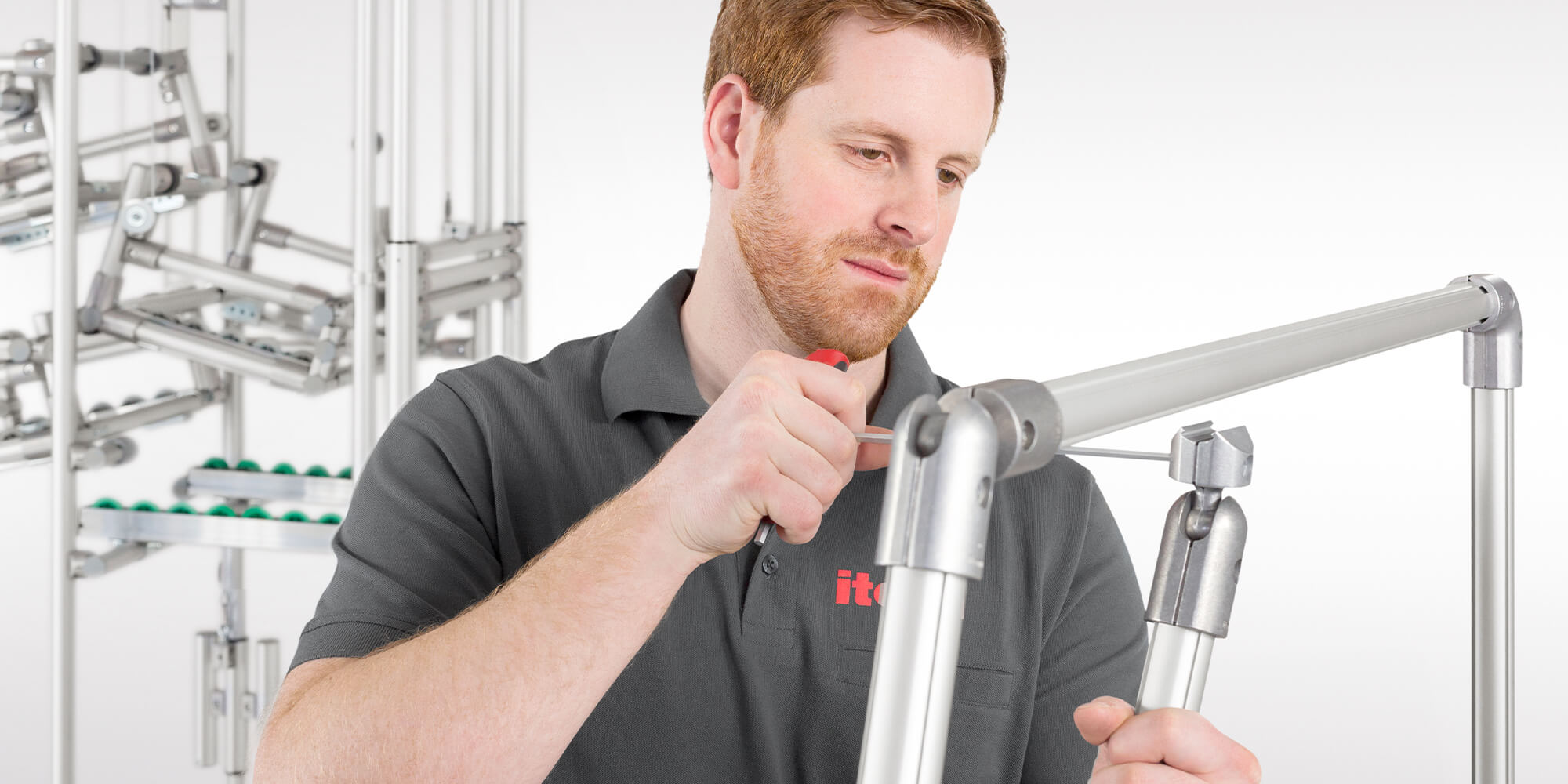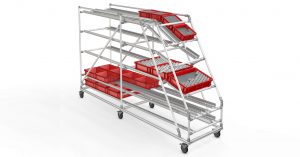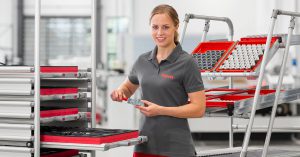The lean philosophy provides a fundamental basis for companies that are looking to improve processes, but what does Kaizen actually have to do with that?
Anyone who takes an interest in lean production will soon come across the principles of “Kaizen” and “CIP” (= continuous improvement process). These two terms are also often used synonymously, which can be particularly confusing for people who are new to the world of lean, so it’s worth starting by briefly expanding a little. The key thing to point out at this stage is that Kaizen is a traditional Japanese mindset, whilst CIP is how western countries apply Kaizen in the industrial context. This distinction becomes clearer if we take a look at the history of lean production, which started with a reference book called “The Machine That Changed the World: The Story of Lean Production” (1990). In this ground-breaking monograph – often simply referred to as the “MIT study” – James P. Womack, Daniel Roos and Daniel T. Jones describe the success principles of Japanese companies in the automotive industry, especially Toyota.
When people talk about lean production, they therefore mean the philosophy relating to the improvement of processes in production, which is based on the Toyota Production System. Although Toyota applies the Kaizen principle, this must always be seen in the traditional context, which goes far beyond economic aspects. Based on the way western countries understand the concept used by Toyota, it would be referred to more as CIP. Whereas Kaizen is an integral part of Japanese culture and thus also exists outside the industrial context, however, this is not the case with CIP. Under the lean management concept, CIP extends to the office environment, for example, but plays no role whatsoever in people’s home lives. At the same time, though, there would be no CIP without Kaizen. Anyone who is familiar with the meaning of the Kaizen principle and CIP therefore has a better understanding of how to make targeted improvements to processes.

The world of lean production
Less waste and more added value – lean production methods help you make targeted improvements to your production efficiency. Our white paper provides a concise introduction.
DOWNLOAD NOW
The meaning and origin of Kaizen
“Having no problems is the biggest problem of all.” That’s how Taiichi Ohno (1912-1990), who invented the Toyota Production System, summed up Kaizen. The term itself is made up of the Japanese words “Kai” (= change) and “Zen” (= for the better). Traditionally, Kaizen is therefore translated as “change for the better”. It’s an attitude characterized by the pursuit of continuous improvement. Kaizen thus goes hand in hand with a positive mindset – instead of just accepting the existing situation, you see the opportunity to keep making further changes and improve everything. This way of thinking ultimately found its way into production operations at Toyota, and the company teaches Kaizen principles to this day. According to the “Toyota Way”, Kaizen means all team members throughout the entire organisation are continuously looking for ways of improving operational procedures and this improvement process is supported at all levels of the company.
Although Kaizen sheds light on the origins of the continuous improvement process in an interesting way, companies and their staff should focus specifically on CIP.
This exception aside, however, the Kaizen principle lives on in industry in the form of CIP. When people in western countries talk about Kaizen, they are actually referring to continuous improvement based on lean production. Since no-one except Toyota uses the Toyota Production System, it is more accurate to refer to the principle applied in these countries as CIP rather than Kaizen. Although Kaizen sheds light on the origins of the continuous improvement process in an interesting way, companies and their staff should focus less on Kaizen and more specifically on CIP. That also ties in with the fact that, unlike Kaizen, CIP relates exclusively to processes in the workplace. Kaizen is now used in the sense of personal development outside Japan, too, which tends to add to the confusion.
The Kaizen principle as a source of inspiration – continuous improvement in the workplace
Once CIP has been taken on board, every aspect of production is considered when it comes to making improvements. Given that this method is at the heart of the lean philosophy, the overall aim of this philosophy is never-ending improvement. Relevant processes at the company are improved in small steps, using as many such steps as possible. This principle is also always associated with a positive attitude towards mistakes. Only when mistakes are seen as an opportunity to improve can continuous improvement succeed at a company. Open feedback, responsibility and the freedom to take decisions are therefore integral parts of a lean and CIP culture, enabling employees to make improvements quickly and independently in the workplace. Staff are provided with ideal conditions for this in special CIP workshops, where they can use specific components – from the item Lean Production Building Kit System, for instance – to produce shelves, transport trolleys and other factory equipment. The Lean Production Building Kit System centres on Profile Tube System D30. One person with one tool and one type of fastener for 90-degree connections is all that is needed, which significantly speeds up assembly processes. Thanks to the modular design, making adjustments is also extremely easy.
Employees are the key to lean production. Given that they are at the place of value creation (Gemba), they know best where and to what extent potential exists for improving processes.
When it comes down to it, employees are the key to lean production. Given that they are at the place of value creation (Gemba), they know best where and to what extent potential exists for improving processes. This involvement is also crucial for quality management in line with DIN EN ISO 9001. Unlike Kaizen, which tends to maintain a more general approach, CIP puts the quality aspect centre stage. Despite its key significance, though, this method is just one of numerous measures that are required to successfully roll out and embed the lean production concept. Generally speaking, the continuous improvement process is all about little details. All the same, CIP always revolves around reducing the throughput time. This relates not only to production as such – it also includes idle periods in between individual processes or during storage, for example. The close relationship between throughput time and productivity means that reducing the former also increases the latter. High throughput times are the result of issues such as Muda (waste), Mura (imbalance) and Muri (overloading). These are also referred to as the 3Ms of lean production.

Online lean production training
Lean principles, CIP, SMED, value-stream mapping, value-stream design, the pull principle and much more besides – access a whole host of learning content relating to lean production free of charge in the item Academy.
EXPAND YOUR TRAINING NOW
An example of CIP in practice – using the PDCA cycle to implement measures
Like Kaizen, CIP may seem a little abstract at first glance. That changes as soon as you turn your attention to the PDCA cycle. However, it’s important to note that this cycle is only effective in conjunction with other lean production methods. For example, the 5S method (establishing standards), value-stream mapping (depicting the actual state) and value-stream design (defining the target state) are essential in this context. The PDCA cycle has become established for implementing the goals defined using value-stream mapping and value-stream design. It consists of the steps “Plan”, “Do”, “Check” and “Act”, hence the abbreviation PDCA. Just one measure per PDCA cycle should be defined. The individual steps for specific improvements are as follows:
- Plan: The management team observes processes and the actual state on site to identify processes that are worth improving. On this basis, a plan is defined to introduce the continuous improvement. This ultimately results in a measure to achieve a target state, based on data, facts and figures.
- Do: The PDCA cycle is all about trying out things on a small scale. A measure should therefore be implemented in a practical test to clearly understand the cause-and-effect relationship. If something doesn’t work, no other processes are then affected.
- Check: The “Do” step should be followed by an analysis. This involves listing successes and failures, thereby revealing which strategy could be implemented throughout the company.
- Act: Only at this stage does large-scale implementation start. Comprehensive measures need to be documented and verified. It is also possible to hold workshops or use new equipment. If measures are successful, they can be made standard. If not, the implementation process starts again based on the PDCA cycle.
Improving company processes – body of knowledge regarding the principles of lean production
Besides the principle of continuous improvement based on Kaizen, there are many other inspiring aspects of lean production. By covering this topic since its early days, the item blog has built up an extensive archive of knowledge relating to the improvement of processes in the industrial workplace. Here’s a selection of our lean production blog posts:
- Rolling out lean production – how best to get staff on board
- Lean production – definition, explanation and benefits
- Production management – a comparison of the push and pull principles
- Lean production – visual management at a glance
- Visual management – 5S and Poka-Yoke
- Heijunka: Levelled production
- Process optimisation in production – an expert opinion
- Lean production – methods at a glance
Are you interested in fascinating reports and innovations from the world of lean production? Then we have just what you’re looking for! Simply subscribe to the item blog by completing the box at the top right.





